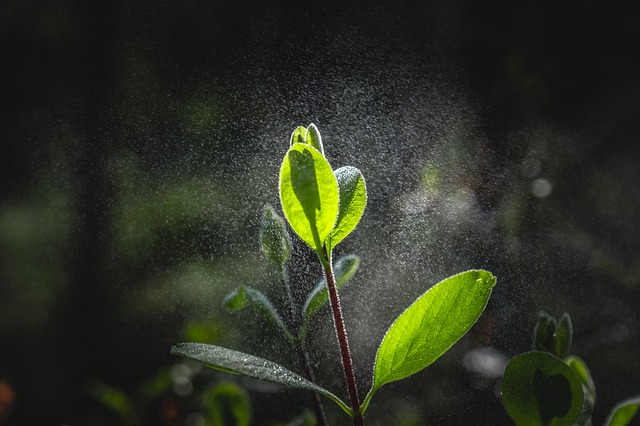An international team of scientists lead by Lund University and involving The University of Western Australia’s School of Molecular Sciences, and the ARC Centre of Excellence in Plant Energy Biology has made the surprising discovery that a plant’s reaction to rain is close to one of panic.
The research, led by Olivier Van Aken, and with Alex Van Moerkercke as first author, was published in Proceedings of the National Academy of Sciences. The study revealed that complex chemical signals are triggered when water lands on a plant to help it prepare for the dangers of rain.
UWA Professor Harvey Millar said after spraying plants with water and observing the effect, the researchers noticed a chain reaction in the plant caused by a protein called Myc2.
“When Myc2 is activated, thousands of genes spring into action preparing the plant’s defences,” Professor Millar said. “These warning signals travel from leaf to leaf and induce a range of protective effects.”
“As to why plants would need to panic when it rains, strange as it sounds, rain is actually the leading cause of disease spreading between plants.”
“When a raindrop splashes across a leaf, tiny droplets of water ricochet in all directions. These droplets can contain bacteria, viruses, or fungal spores. A single droplet can spread these up to 10 metres to surrounding plants.”
Evidence also suggests that when it rains, the same signals spreading across leaves are transmitted to nearby plants through the air.
“One of the chemicals produced is a hormone called jasmonic acid that is used to send signals between plants,” Professor Millar said.
“If a plant’s neighbours have their defence mechanisms turned on, they are less likely to spread disease, so it’s in their best interest for plants to spread the warning to nearby plants.
“When danger occurs, plants are not able to move out of the way so instead they rely on complex signalling systems to protect themselves.”
Professor Millar said it was clear plants had an intriguing relationship with water, with rain a major carrier of disease but also vital for a plant’s survival.
The study was conducted in collaboration with SLU Umeå, The Salk Institute for Biological Studies, Ghent University, VIB Center for Plant Systems Biology, La Trobe University and the Commonwealth Scientific and Industrial Research Organisation (CSIRO).
Read the paper: Proceedings of the National Academy of Sciences
Article source: University of Western Australia






